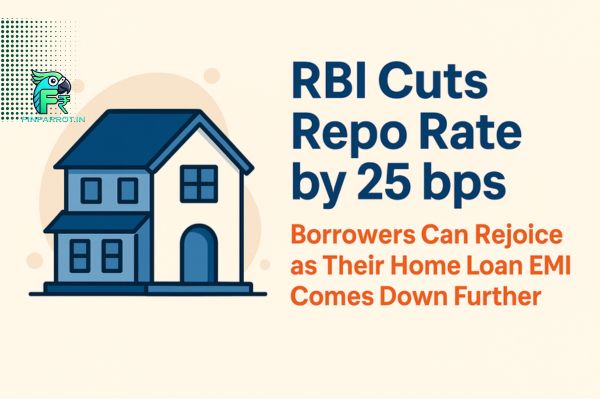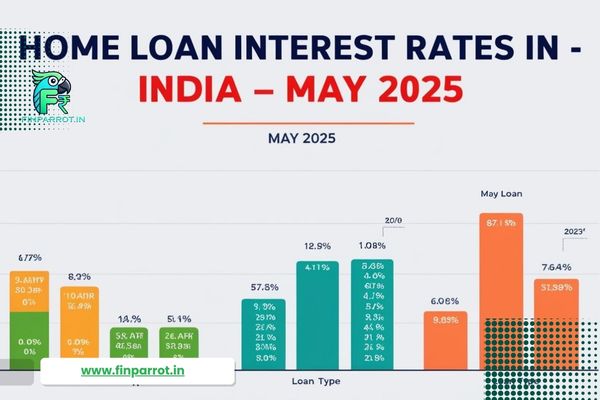Introduction
Securing a business loan in India can be transformative for small business owners—but it requires careful planning and financial discipline. Many entrepreneurs struggle with low credit scores, incomplete documentation, and understanding the requirements of lenders approved by the Reserve Bank of India (RBI). This guide breaks down 10 key tips, provides a realistic 2-year roadmap, and shares a real-life success story from Rajeev Mishra, a reseller in Kolkata. Whether you’re exploring NBFCs, digital lending platforms, or traditional bank loans, this guide will help you build strong financial records, meet key eligibility criteria, and secure a loan.
10 Key Tips for Loan Preparation
Assess Your Financial Needs: Clearly define the purpose of your loan—expansion, working capital, or equipment purchase—and calculate the exact amount needed to avoid over-borrowing.
Check Your Creditworthiness: Monitor both personal and business credit scores. Factors like repayment history and credit utilization are crucial. Timely GST filings and ITR submissions help boost your CIBIL score.
Research Loan Options: Evaluate traditional bank loans, NBFCs (like Bajaj Finserv, Capital Float), and digital platforms such as online loan apps for business. Compare interest rates (typically 10-14% for secured loans, slightly higher for unsecured ones) and repayment terms.
Prepare a Robust Business Plan: Develop a detailed plan including market analysis, competitive insights, and financial projections. A strong plan demonstrates commitment and growth potential to lenders.
Organize Essential Financial Documents: Keep updated records like GST certificates, profit & loss statements, current account statements, and ITR filings. Tally is sufficient, and Zoho Books is also now available. These help generate the financial reports lenders require, streamlining your application process.
Understand Lender Requirements: Familiarize yourself with criteria like collateral (typically property, equipment, or inventory), cash flow, and business history. Tailor your application to clearly meet these requirements.
Leverage Technology with Loan Apps: Utilize digital platforms that offer quick pre-approvals. Many lenders, including those with best loan apps for bad CIBIL score, provide an easy, online application process that can simplify documentation.
Maintain Financial Discipline: Ensure consistent monthly GST filings and proper bank transactions through a dedicated current account. This regularity not only builds credibility but also supports a healthy cash flow history.
Build Relationships with Lenders: Establish rapport with bank representatives and NBFC contacts. Personal connections often lead to tailored advice and faster resolutions during the application process.
Seek Professional Guidance: Consult experienced financial advisors or accountants who can help optimize your financial statements and explain eligibility nuances for government schemes like PMEGP, Mudra, and Udyam loans. Their expertise can also help clarify complex credit score factors and improve documentation quality.
2-Year Roadmap to a ₹10 Lakh Loan
Year 1: Laying the Foundation
Business Registration & GST Compliance: Register your business (Sole Proprietorship, Partnership, or Pvt Ltd) and apply for GST if your turnover meets the threshold (₹20 Lakh+ for services or ₹40 Lakh+ for goods). File monthly GST returns to build a robust tax record.
Open a Current Account: Transition all transactions to a current account to ensure transparency and create a verifiable income trail.
Establish Basic Financial Records: Use accounting software like Tally to record income and expenses, aiming for steady profit margins even if modest. This sets the stage for showing consistency.
Regular ITR Filing: File your Income Tax Returns every year—even with low profits—to establish credibility. Demonstrating a profit margin of at least 6-8% of turnover is beneficial.
Improve Your CIBIL Score: Use a small business credit card responsibly and ensure timely payments. Aim for a score above 750 by managing repayments and keeping credit utilization low.
Year 2: Strengthening Financials & Preparing the Application
Boost Revenue & Profit Margins: Focus on increasing turnover via digital transactions (UPI, Net Banking) and aim for a steady annual profit that supports your loan size.
Continue GST & ITR Compliance: Maintain rigorous monthly GST filings and timely ITR submissions to build a robust financial history.
Build a Repayment Record with a Small Loan: Consider applying for a small loan (₹1-2 Lakhs) to create a successful repayment record, which enhances your creditworthiness for a larger loan.
Research and Compare Loan Schemes: Look into government schemes (PMEGP, Mudra, Udyam) and digital NBFC options approved by the Reserve Bank of India (RBI). Note that many digital platforms have competitive interest rates and faster processing times.
Apply for the ₹10 Lakh Loan: Once your financial records are in order and your credit score is strong, compile your documents and apply. Ensure you meet all eligibility criteria, including collateral details, steady turnover, and documented profit margins.
Loan rejected? Find out why & how to get approved – click here!
Real Story: Rajeev Mishra’s Journey to Loan Success
Reseller Business: A Promising Start
In the competitive reseller business, proper financial management is essential. Tally is sufficient, and Zoho Books is also now available. These help maintain accurate records and timely GST filings. With the support of an experienced accountant, even small businesses can achieve a steady annual turnover of 3 to 5 Lakhs—a key metric when seeking low-budget CAA support and exploring online loan app for business options.
How Rajeev Mishra Turned Modest Earnings into a Loan Success
Rajeev Mishra, a reseller from Kolkata, began his journey with a small stall and an annual turnover of 3 to 5 Lakhs rupees. Initially, traditional banks rejected his loan application due to limited documentation and a modest credit score. Determined to grow, Rajeev Mishra meticulously maintained records using Tally or personal account software maintained by his accountant and ensured accurate monthly GST filings. With professional guidance, he organized his profit & loss statements and shifted all transactions to a dedicated current account.
Eager to prove his financial discipline, Rajeev Mishra first secured a small loan, repaying it on time. Over two years, his improved financial records, consistent turnover, and enhanced CIBIL score (above 750) caught the attention of digital lenders approved by the Reserve Bank of India (RBI). Applying through a government-approved loan app, Rajeev Mishra secured a ₹10 Lakh loan at competitive interest rates. This funding enabled him to invest in inventory, upgrade his stall, and expand his product range, resulting in a significant revenue boost and a thriving business.
FAQ’s
1. What if my business is less than 2 years old?
If your business is new, lenders may see it as higher risk. You can:
Start with a small loan (₹1–2 Lakhs) to build your credit and repayment history.
Apply for a secured loan using collateral such as property, machinery, or inventory—even if the business is under 2 years old.
This helps establish financial credibility over time.
2. Is a CIBIL score mandatory for a business loan?
Yes, for unsecured loans, a personal or business CIBIL score of 750+ is highly preferred. However:
If you don’t meet this score, you can opt for a secured loan where lenders focus more on the value of your collateral.
Maintaining regular GST filings, ITRs, and repayments will help you improve your CIBIL score over time.
3. What are the best government loan schemes for small businesses?
Some of the top government-backed options include:
PMEGP (Prime Minister’s Employment Generation Programme): Ideal for new entrepreneurs starting micro-enterprises.
Mudra Loans: Offered under the Pradhan Mantri Mudra Yojana (PMMY), suitable for small businesses, startups, and resellers.
Udyam Loans: Targeted at registered MSMEs for expansion and working capital needs.
These schemes offer low-interest rates, longer repayment tenures, and are available through public sector banks and approved NBFCs.
Conclusion
Securing a ₹10 Lakh loan is not a short-term success plan; it is a strategic approach and a steady effort requiring a long-term perspective. Instead of relying solely on short-term gains, focus on building a stable financial foundation. Progressing slowly and steadily will lead to long-term success. By following these 10 tips and a clear 2-year roadmap, from GST compliance to the effective use of digital tools, you can build a strong financial profile and meet the expectations of lenders approved by the Reserve Bank of India (RBI). Rajeev Mishra’s story demonstrates that even modest beginnings can lead to sustained success when you invest in proper financial systems and professional guidance. Start your preparation today and take the first step towards realizing your business dreams!
Most Read Topics:
For the CIBIL score myths article: “Don’t let common CIBIL score myths mislead you—7 CIBIL Score Myths You Should Stop Believing
For the hidden loan charges article: “Avoid unexpected loan costs by knowing these 30 hidden charges















